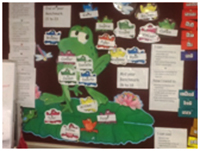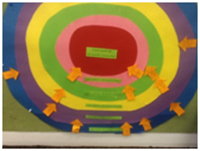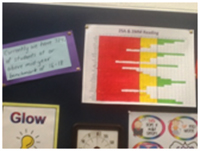At Macgregor Primary School we have adopted ‘Explicit Teaching’ as the foundation for our instruction. It focuses on critical core content and breaking this down into smaller foundational blocks and sequences. Each lesson is organised and focused, with a clear goal and learning expectations outlined. Feedback is provided to children and children reflect on their learning.
This type of teaching approach enables our children to grasp the fundamentals through review and repeated practice. Our teachers focus on the basics in a fun and engaging way. The benefits to our children are both immediate and long-term.
"Visible Learning is when teachers see learning through the eyes of their students, and the students see themselves as the teachers." (John Hattie, 2013)
At our school, learning is 'visible'. This means that students will have a clear understanding of what they are learning, why it is important, and what 'success' will look like for every task they engage in.
Learning outcomes will be made clear to students and they will be taught how to self-assess and set personal learning goals, as well as how to plan to achieve each goal.



(Individual and group targets are set and individual student growth is tracked and displayed on classroom walls.)
Assessment For Learning
Assessment for learning (AfL) acknowledges that assessment should occur as a regular part of teaching and learning and that the information gained from assessment activities can be used to shape the teaching and learning process.
Principles of Assessment for Learning
The following principles provide the criteria for judging the quality of assessment for learning.
AfL (Assessment for Learning) emphasises the interactions between learning and manageable assessment strategies that promote learning
In practice, this means:
- assessment is embedded in learning and informs the planning of future teaching/learning experiences
- teachers use assessment to identify what a student knows and can do
AfL (Assessment for Learning) clearly expresses for the student and teacher the goals of the teaching/learning
In practice, this means:
- teachers know what to teach
- students understand the learning goals and the criteria that will be applied to judge the quality of their achievement
- students receive feedback that helps them make further progress
AfL (Assessment for Learning) reflects a view of learning in which assessment helps students learn better, rather than just achieve a better mark
In practice, this means:
- teachers use tasks that assess, and therefore encourage, deeper learning
- feedback is given in a way that motivates the learner and helps students to understand that mistakes are a part of learning and can lead to improvement
- assessment is an integral component of the teaching-learning process rather than being a separate activity
AfL (Assessment for Learning) provides ways for students to use feedback from assessment
In practice, this means:
- feedback is directed to the achievement of standards and away from comparisons with peers
- feedback is clear and constructive about strengths and weaknesses
- feedback is individualised and linked to opportunities for improvement
AfL (Assessment for Learning) helps students take responsibility for their own learning
In practice, this means:
- assessment includes strategies for self-assessment and peer assessment emphasising the next steps needed for further learning
AfL (Assessment for Learning) is inclusive of all learners
In practice, this means:
- assessment against standards provides opportunities for all learners to achieve their best
- assessment activities are free of bias.
The following characters help us to implement visible learning at Macgregor, and are found in every classroom across the school.
WALT and WILF

(Images will vary from class to class, but meaning remains the same).
These acronyms have been developed by educational researcher and author, Shirley Clarke, as an easily remembered checklist for teachers. We are now using them in our classes at Macgregor.
WALT stands for "We are Learning To…". It is a reinterpretation of the teachers lesson objectives (or learning intentions), phrased in a way that students can easily understand.
WILF stands for "What I'm Looking For". It is a way of explaining the things students need to do in their work in order to be successful. "By the end of the lesson your work will look like ..."
